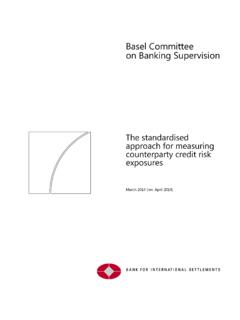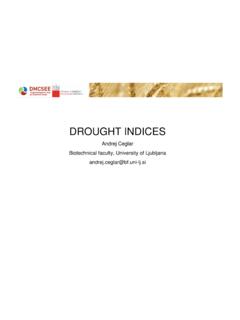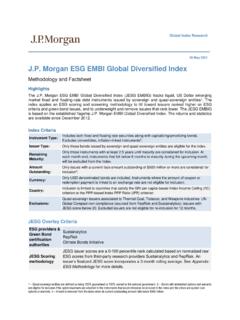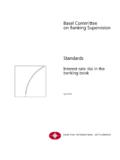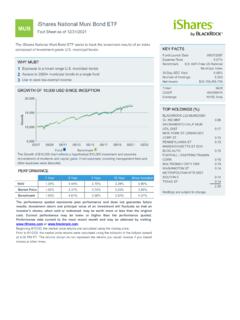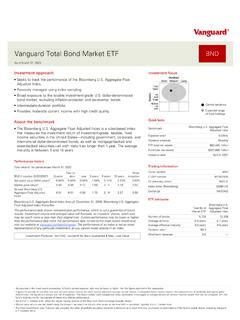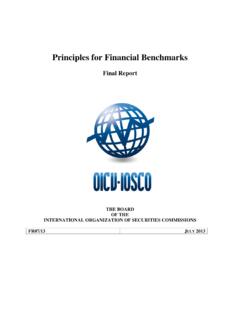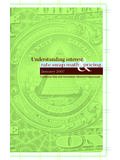Transcription of ACI Dealing Certificate New Version - ACI FMA
1 Syllabus ACI Dealing Certificate New Version ACI Dealing Certificate New Version Syllabus Effective 27 July 2020 Exam Code 002-101 Setting the benchmark in certifying the financial industry globally 8 Rue du Mail, 75002 Paris - France T: +33 1 42975115 - Syllabus ACI Dealing Certificate New Version SYLLABUS ACI Dealing Certificate New Version Examination delivered in English Introduction The ACI Dealing Certificate New Version Exam has been designed to cover the basic competence skills for the new entrants in Dealing floors and all other financial markets roles related to foreign exchange, interest rates and commodities instruments. The Syllabus has been built to allow basic un derstanding of these instruments and the related financial markets segments, therefore providing the required competence level for existing or future financial markets professionals.
2 The Syllabus and the respective exam have been redesigned with five topics covering the full range of foreign exchange, interest rates and commodities instruments, as well as their related markets with questions based on theory and practical knowledge, in addition to financial markets environment and applications with questions based on theory. Building upon the competence skills provided by the ACI Dealing Certificate New Version , future financial market professionals will be expected to prove their knowledge and adherence to good market practices embedded in the FX Global Code and other relevant industry s Codes. The course of study for the ACI Dealing Certificate New Version is designed for: Recent entrants and junior dealers (0-24 months experience) in the Dealing room Middle office and operations personnel Compliance and risk officers The ACI Dealing Certifi cate New Version is a precursor to the ACI Diploma exams.
3 There are five core subject areas in the ACI Dealing Certificate New Version : Financial Markets Environment Foreign Exchange Rates (Money and Interest Rate Markets) FICC (Fixed Income, Currency and Commodities) Derivatives Financial Markets Applications Keywords: Calculate, Define, Describe, Distinguish, Explain, Identify, Outline, Understand Syllabus ACI Dealing Certificate New Version 1. F inanci al Markets Environment Overall Objectives: The overall objective of this topic is for candidates to understand the functions performed by financial markets in the economy and to explain its different segments, their scope and instruments. Candidates will be able to understand the basic concepts of efficient markets and the impact of regulation and codes in financial markets.
4 Referring to the life cycle of a typical financial market transaction, candidates will be able to explain its main phases. At the end of this topic, candidates will be able to: Define financial markets and explain their main functions for the economy. Define foreign-e xchange markets, money markets, capital markets and commodities markets. Describe how the main economic agents can impact financial markets. Outline how financial markets can be segmented under different criteria: term to maturity , product phase (primary and secondary), trade dates and settlement dates, location and regulation, and Dealing structures. Distinguish between cash/spot and derivatives/forward markets. Distinguish between regulated markets and OTC markets, and understand how both functions work.
5 Identify the various types of regulated markets and their Dealing structures. Outline and describe the roles of the main participants in financial markets. Define the function of market-making, explain the incentives to make markets and the main risks involved in market-making. Understand how available information impacts the efficiency of markets. Explain the key functions of every phase of a financial markets transaction, from front office execution to settlement and reporting, distinguishing which steps are responsibility of the front, middle and back-office roles. Understand what are the FX Global Code, the Global Precious Metals Code and the United Kingdom Money Markets Code. Describe and outline the development of the FX Global Code, of the Global Precious Metals Code and of the United Kingdom Money Markets Code.
6 Explain the scope, applications and objectives of the FX Global Code, of the Global Precious Metals Code and of the United Kingdom Money Markets Code. Define and identify the Market Participants of the FX Global Code, of the Global Precious Metals Code and of the United Kingdom Money Markets Code. Explain the leading principles of the FX Global Code and of the Global Precious Metals Code, as well as explain the underpinning principles of the United Kingdom Money Markets Code. Understand the Statement of Commitment to the FX Global Code, to the Global Precious Metals Code and to the United Kingdom Money Markets Code, and how the respective Statement outline the objectives of each of those Codes.
7 Syllabus ACI Dealing Certificate New Version Understand what are the main regulations applicable to financial markets and their products, as well as their scope, applications and objectives: Markets in Financial Instruments Directive II (MiFID II, including its Regulation MiFIR), Market Abuse Regulation (MAR), Benchmarks Regulation (BMR), Dodd-Frank Wall Street Reform and Consumer Protection Act, European Market Infrastructure Regulation (EMIR), Basel I, Basel II and Basel III. Syllabus ACI Dealing Certificate New Version 2. Foreign Exchange Overall Objective: The overall objective of this topic is for candidates to understand and to be able to explain basic foreign exchange rate quotations, their terminology, mechanics and the principal risks associated with FX spot and forward instruments.
8 At the end of this section, candidates will be able to define the relationship between forward rates and interest rates, explain the use of FX outright forwards for foreign currency risk management and the use of FX swaps in rolling spot positions, hedging FX outright forwards, and in creating synthetic foreign currency assets and liabilities. Candidates will be required to perform basic calculations for FX market instruments. The candidates will be able to describe NDFs and, explain their rationale. Candidates will be able to understand and identify quotations for precious metals, and also demonstrate a basic understanding of the structure and operation of precious metals financial markets. At the end of this topic, candidates will be able to: Distinguish the preferred base currency and the quoted currency in standard exchange rate notation in a currency pair.
9 Identify the ISO codes for the currencies of the G20 countries. Distinguish between the big figures and the points/pips in a currency pair. Identify a bid/offer spot exchange rate as price-maker and as price-taker to calculate either a base or quoted currency amount. Identify the best of several spot rates as the buyer or as the seller of an amount of base or quoted currency. Understand and define the basic Dealing terminology and characteristics of FX spot, FX outright forward, FX swap and forward-forward FX swaps. Calculate cross-rates from a given pair of exchange rates with all the possible combinations between base and common currencies. Calculate and explain the reciprocal rate of an exchange rate.
10 Outline the mechanics and roles of benchmark fixings for FX rates. Calculate a FX outright forward rate from a FX spot rate, interest rates and/or the forward points (and vice versa). Explain the relationship between the outright forward rate, the forward points, the spot rate and interest rates, including the concept of interest rate parity as well as the concept and possibility of covered interest arbitrage. Calculate forward cross-rates. Define forward value dates for standard periods and list those periods. Describe the structure and mechanics of an FX outright forward and of a FX swap, outline how a FX outright forward can be hedged with a FX spot transaction and money market transactions and outline how a FX swap can be used in place of money market transactions to hedge an FX outright forward and in creating synthetic foreign currency asset and/or liabilities.
